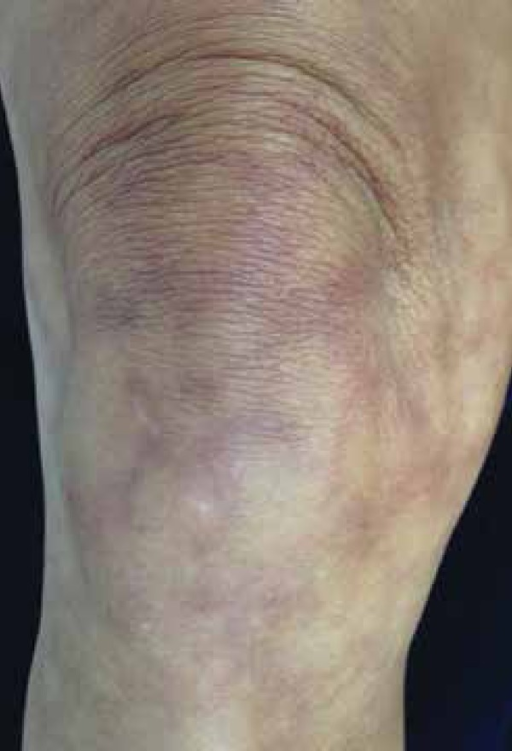Amantadine-induced livedo reticularis - Case report.
Quaresma MV, Gomes AC, Serruya A, Vendramini DL, Braga L, Buçard AM -Anais brasileiros de dermatologia(2015)

© Copyright Policy- open-access
f02:Livedo reticularis. Detail showing the lacy aspect
View Article:PubMed Central - PubMed
Affiliation:Santa Casa da Misericórdia do Rio de Janeiro, Rio de Janeiro, RJ, Brazil.
Additional Figures:
Article
Collection
Results
Bottom Line:The drug-induced type is less common.The drugs amantadine and norepinephrine are often implicated.We report a case of a patient diagnosed with Parkinson's disease with chronic livedo reticularis associated with the use of amantadine and improvement after discontinuation of the drug.
Abstract
AbstractLivedo reticularis is a spastic-anatomical condition of the small vessels which translates morphologically by a reticular pattern, interspersing cyanosis, pallor and erythema. The same can be congenital or acquired. Among the acquired, we highlight the physiological livedo reticularis and the idiopathic livedo by vasospasm; the latter configures the most common cause. The drug-induced type is less common. The drugs amantadine and norepinephrine are often implicated. Cyanosis is usually reversible if the causative factor is removed, however, with chronicity, the vessels may become permanently dilated and telangiectatic. We report a case of a patient diagnosed with Parkinson's disease with chronic livedo reticularis associated with the use of amantadine and improvement after discontinuation of the drug.
Mentions
During physical examination were observed linear maculous lesions of erythematous-bluishcolor and lacy aspect on the lower limbs. No ulcerated lesions were evident, nor signsof atrophic scars (Figures 1 and 2).
MeSH



